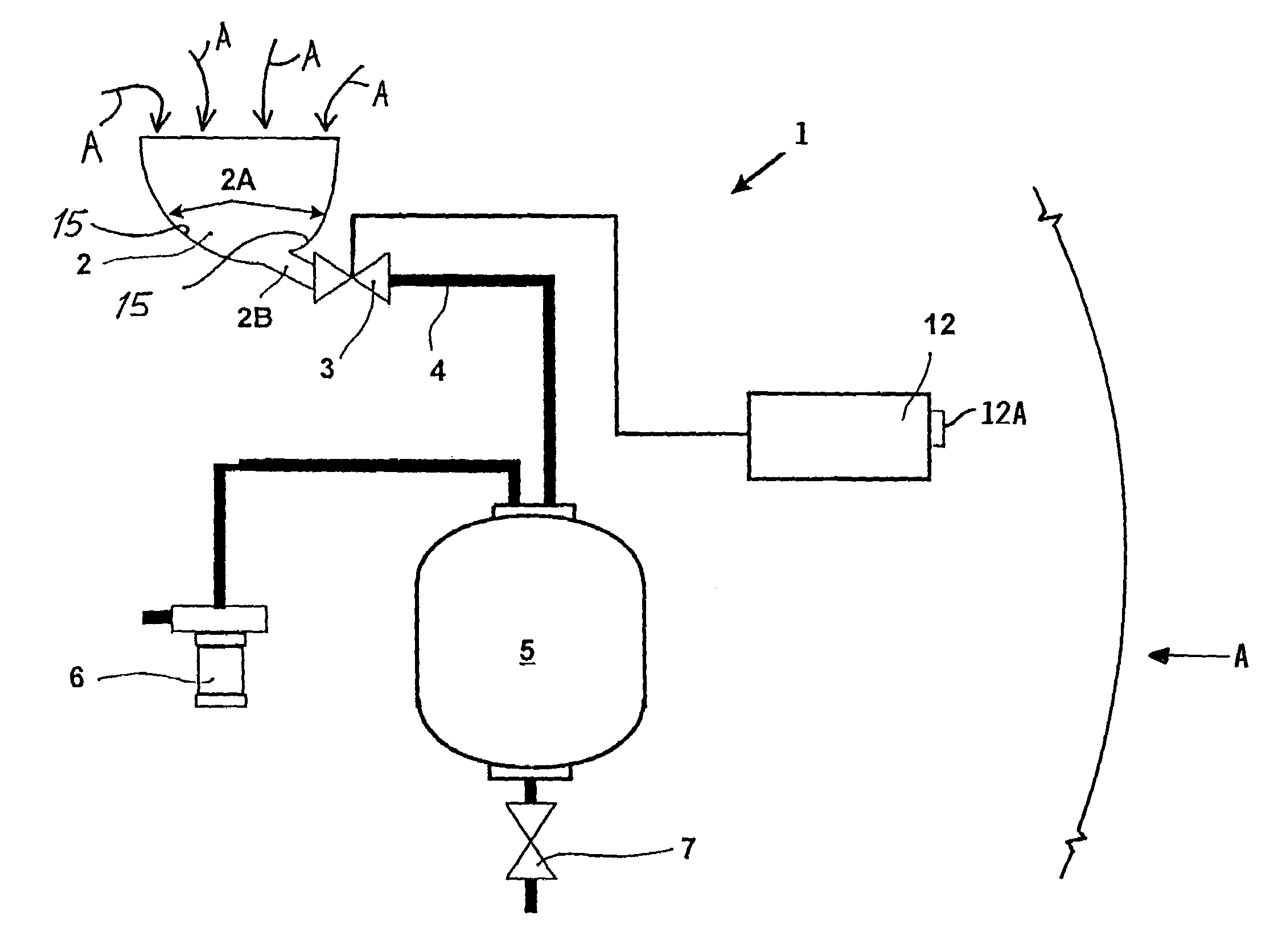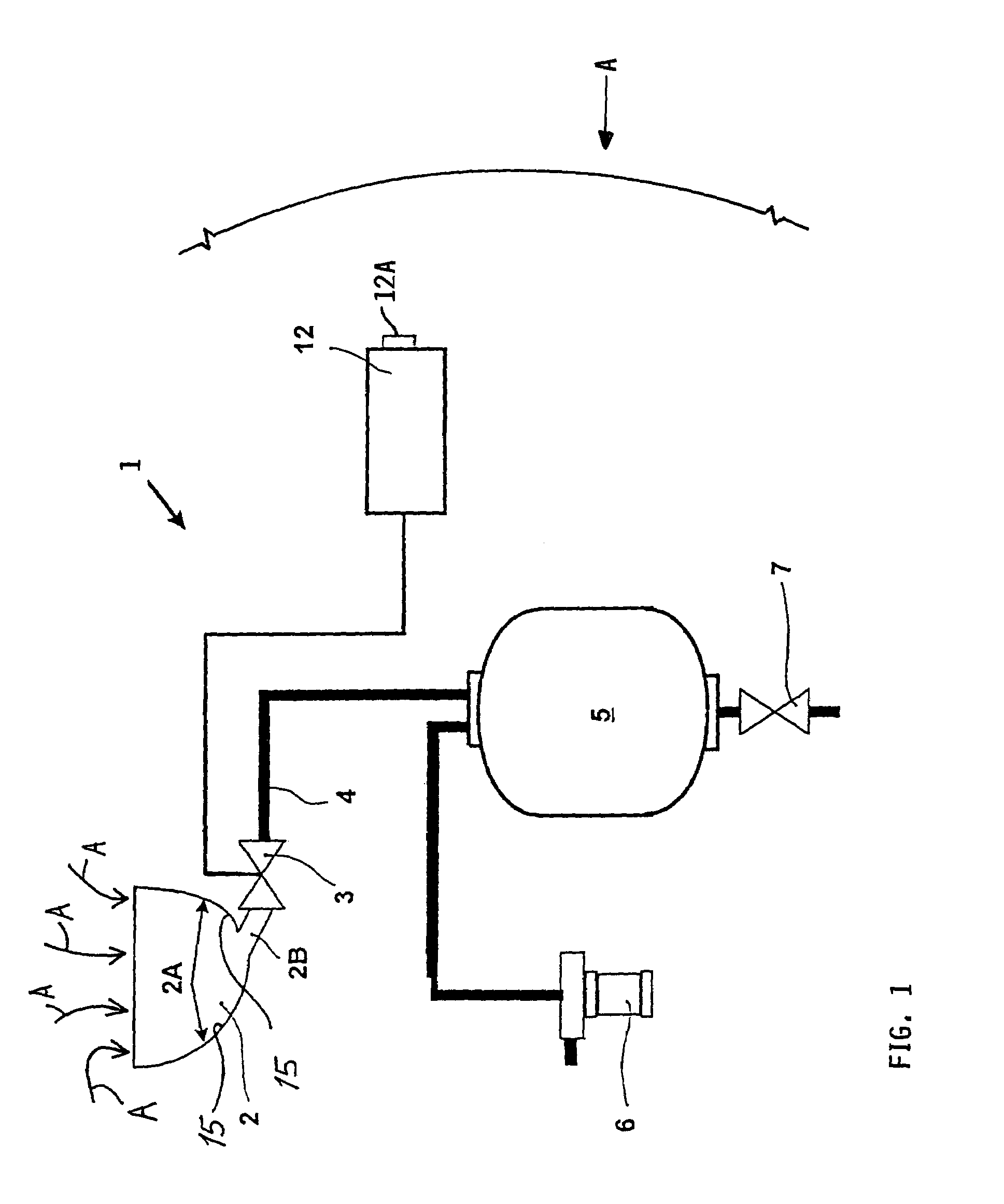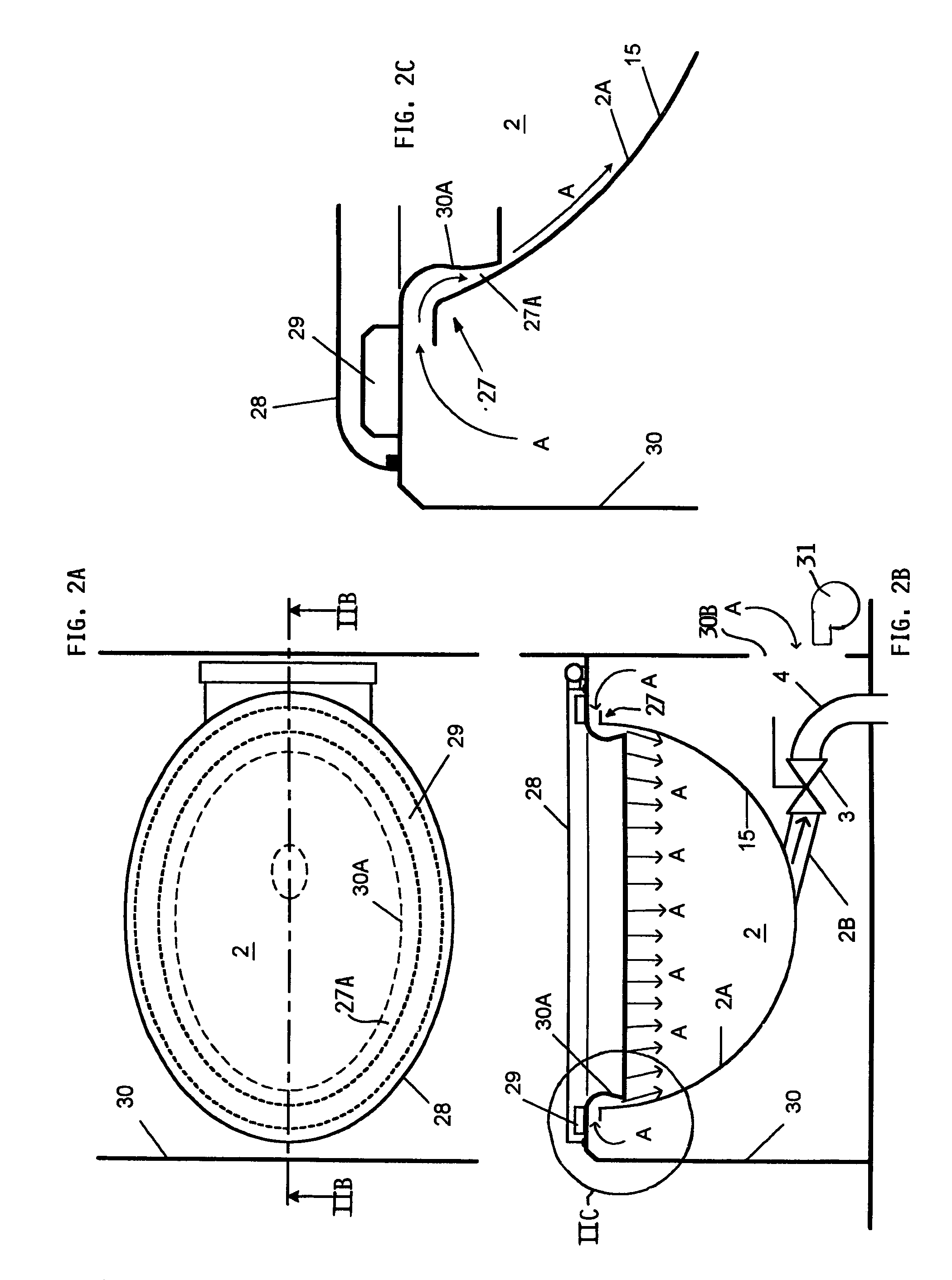Waterless vacuum toilet system for aircraft
a vacuum toilet and aircraft technology, applied in the field of vacuum toilet systems, can solve the problems of not being well suited to commercial passenger transport vehicles, not having waste contact surfaces, and only limited capacity of transporting vehicles, so as to increase the seating capacity of aircraft, reduce weight, and save weight
- Summary
- Abstract
- Description
- Claims
- Application Information
AI Technical Summary
Benefits of technology
Problems solved by technology
Method used
Image
Examples
Embodiment Construction
[0027]FIG. 1 is a schematic representation of a toilet system 1 according to the invention in an aircraft AC schematically represented by a broken section of a wall of the aircraft fuselage thereof. The toilet system 1 comprises essentially at least one toilet bowl 2 that is connected via a waste valve 3 to a waste collection pipe 4. The term toilet bowl herein includes all possible types and configurations of toilets for the disposal of urine and / or fecal waste including sit-down toilets, crouching-type toilets, urinals, etc., while the drawings schematically show a sit-down toilet configuration as an example. It is possible to connect a plurality of toilets 2 located at various locations in the aircraft AC to the waste collection pipe 4. The waste collection pipe 4 includes pipes, conduits, hoses, or lines that are used to convey waste material. The waste collection pipe 4 leads to a waste collection tank 5 in which the waste material is collected.
[0028]A pressure differential bet...
PUM
| Property | Measurement | Unit |
|---|---|---|
| thickness | aaaaa | aaaaa |
| wetting angle | aaaaa | aaaaa |
| wetting angle | aaaaa | aaaaa |
Abstract
Description
Claims
Application Information
 Login to View More
Login to View More - R&D
- Intellectual Property
- Life Sciences
- Materials
- Tech Scout
- Unparalleled Data Quality
- Higher Quality Content
- 60% Fewer Hallucinations
Browse by: Latest US Patents, China's latest patents, Technical Efficacy Thesaurus, Application Domain, Technology Topic, Popular Technical Reports.
© 2025 PatSnap. All rights reserved.Legal|Privacy policy|Modern Slavery Act Transparency Statement|Sitemap|About US| Contact US: help@patsnap.com



